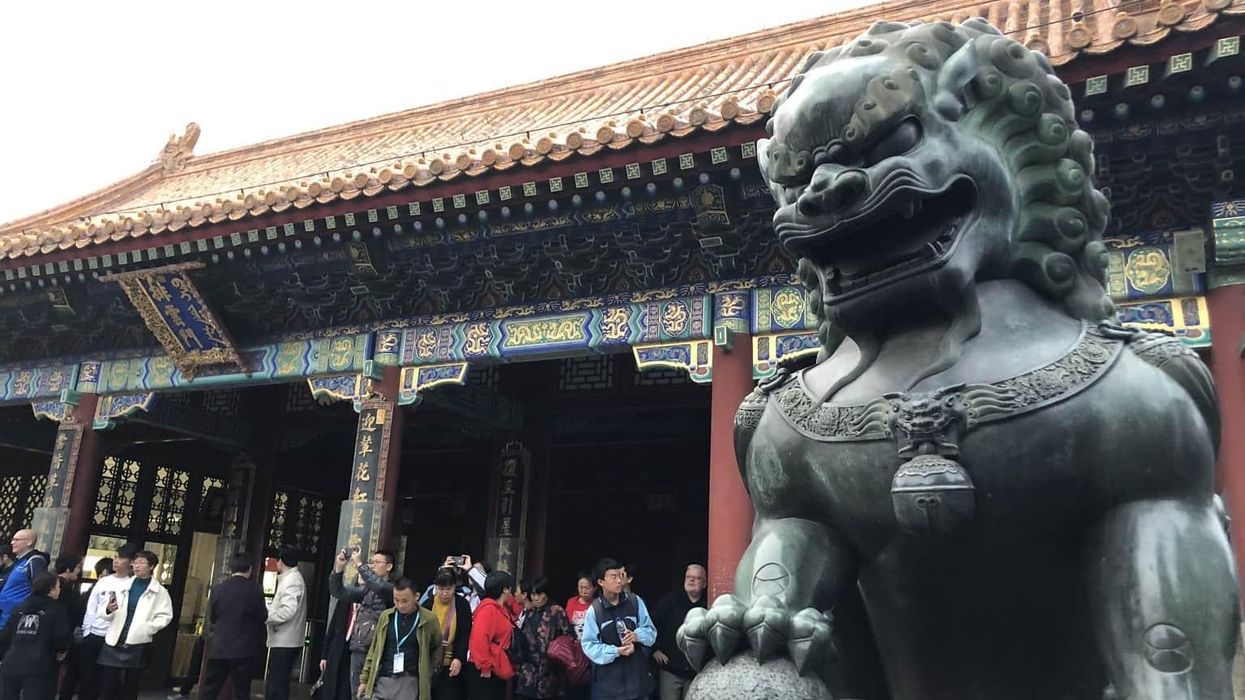Yesterday, Assistant Attorney General for the National Security Division Matthew G. Olsen announced that an anti-economic espionage program launched in 2018 called the “China Initiative” would cease to exist. This is a welcome development but falls woefully short of addressing the complex ways that anti-China sentiment is metastasizing in the United States under the banner of national security.
A systematic assessment of the damage — both direct and indirect — that Asian American researchers faced due to the China Initiative is needed. In the immediate term, the Justice Department should begin an educational program for its employees about the history of discrimination against Asian Americans, especially during times of overheated rhetoric against Asian countries. Call it “the Vincent Chin Initiative,” named after the 27-year-old Chinese American who was beaten to death by auto workers frustrated by job losses from Japan’s car industry.
To be clear, there are legitimate threats China poses to the United States, such as government-backed industrial espionage, intellectual property theft, and covert disinformation campaigns. But stoking fear and suspicion about China’s threat could lead to worst-case scenario assumptions about anyone connected to China and reduce space for cooperation in areas of bilateral interest, such as addressing the planetary threat of climate change.
While the China Initiative’s aim may have been to combat Chinese economic espionage and threats to U.S. national security, it evolved into institutionalized racial profiling of people of Chinese heritage. Before long, members of Congress, Asian American organizations, and numerous academics were demanding that the Initiative end due to concerns about discrimination against Asian scientists and the chilling effect that it had on academic research.
Given this context, yesterday’s announcement that the DOJ would terminate the China Initiative is good news. In his remarks at the National Security Institute, Olsen condemned the “narrative of intolerance and bias” fueled by the China Initiative. Noting that he began his career in the civil rights division at DOJ, Olsen expressed “concern that DOJ had lower standards for people with ties to China.” He said that the nature of today’s threats to the United States demands a “broader approach,” rather than country-specific — something that others at the Quincy Institute have recommended in the context of human rights promotion. Olsen justified the decision to end the China Initiative to consultations with members of Congress, members of the scientific and academic communities, and the Asian American community, affirming the importance of public participation in federal policymaking.
At times, Olsen sounded as though he was preemptively addressing critics who might describe the decision to end the China Initiative as being “too soft” on Beijing. Indeed, he repeatedly used sweeping terms such as “malign influence” to describe China’s threat to the United States without explaining what the term means or how it affects Americans. At one point during the speech, Olsen defended the China Initiative, stating that he “saw no indication that DOJ's decision was based on bias or prejudice.”
According to an investigation conducted by MIT Technology Review, DOJ never “officially defined the China Initiative or explained what leads it to label a case as part of the initiative.” The Initiative strayed from its primary goal of curbing economic espionage to “research integrity” issues such as disclosing foreign affiliations on forms. Many cases have turned out to have little connection to national security or industrial espionage, and nearly 90 percent of the defendants charged under the China Initiative were found to be of Chinese heritage. By evading responsibility for mistakes made by the initiative, Olsen undermined his own assertion that the Justice Department has recognized the implications of its past actions and are seeking to avoid the same mistakes going forward.
Olsen also endorsed FBI Director Christopher Wray’s speech last month on countering the threat from China. This is somewhat troubling, as Wray had offered an overblown assessment of the extent and nature of the threat from China. According to Wray, American “economic security and our freedoms” were on the line and China has the capacity to undermine us from within, making it far more insidious and ubiquitous.
To his credit, Wray added this disclaimer in his remarks: “The Chinese government and the Chinese Communist Party pose the threat we’re focused on countering — not the Chinese people, and certainly not Chinese Americans, who are themselves frequently victims of the Chinese government’s lawless aggression.” Perhaps such sentiments will dampen some people’s paranoia about China, but it seems hardly enough to counterbalance the highly emotive and zero-sum language used to describe China’s threat, which feeds the “evil China” narrative and fuels anti-Asian hate. Seen in this context, Attorney General for the State of Connecticut William Tong’s recent comment at Committee of 100 that he is “routinely accused on social media for being a PRC agent” because of the atmosphere of paranoia created by the China Initiative seems hardly surprising.
Perhaps a bellwether of things to come is a forthcoming FBI documentary titled, “Made in Beijing: The Plan for Global Market Domination.” In the trailer, which feels more like a spy thriller than a government documentary, China is depicted as a behemoth obsessed with stealing America’s R&D and technology. The audience is the hardworking American worker, asking "If China worked this hard to steal a corn seed, how hard would they work to steal what you produce?" The film then says "It is the Chinese government's long-term strategy that they want to eventually put you out of business.” At a time of unprecedented personal loss due to COVID-19, such personalized, fear-based language will likely fan the flame of anti-China hate and may lead to more racial profiling of Asian Americans.
Last Saturday marked the 80th anniversary of the signing of Executive Order 9066 by President Franklin D. Roosevelt. One hundred twenty thousand Japanese Americans, most of whom were born in the United States, were stripped of their constitutionally-protected civil rights. As President Biden observed, “The incarceration of Japanese Americans 80 years ago is a reminder to us today of the tragic consequences we invite when we allow racism, fear, and xenophobia to fester.”
President Biden’s historically-conscious attitude needs to trickle down to the national security apparatus. For the Justice Department, that means being careful not to inflate China’s threat, whether it is under the banner of China Initiative or under a more amorphous framework. DOJ can lead the federal government by instituting a new “Vincent Chin Initiative” to educate its workforce on false espionage cases and the rising anti-Asian hate since the start of the pandemic. It could hold regular panels with experts and Asian American scholars to explore how language used by public officials could fuel hate and lead to narrow framing of issues.
The story of Vincent Chin’s tragic murder provides a window into what Asian Americans are living through right now. For it is only when we understand how anti-Asian hate took hold within our democratic system in the past that we can avoid its resurgence.
















